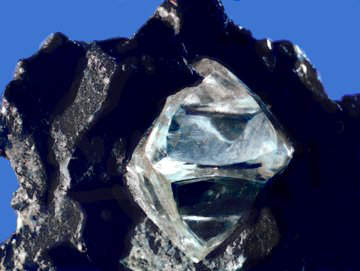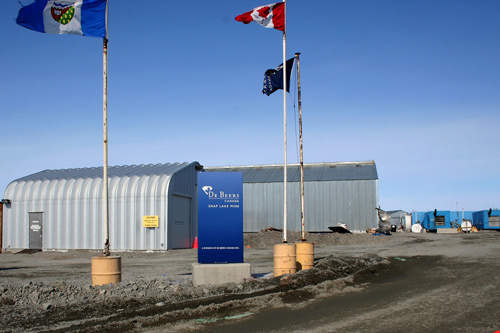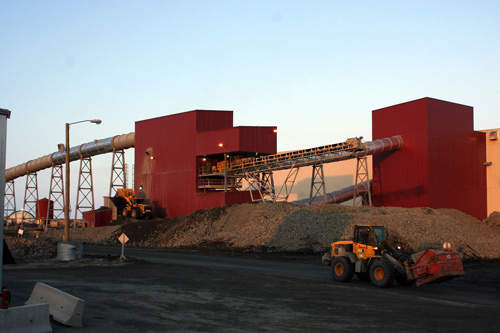The Snap Lake mine is located 220km north-east of Yellowknife, in Canada’s Northwest Territories. De Beers has owned the mine since 2000.
The construction and commissioning of the underground crushing and conveying system was completed in 2008. Commercial production commenced in 2008 at a production rate of 3,150t/d.
The process plant was commissioned during August 2007 and diamonds were recovered in the same month.
In 2008, De Beers decided to restructure the mine’s operation and ease production because of the economic slowdown.
In February 2009 the company announced that it would temporarily shut down the mine as part of organisational restructuring.
In September 2009, the company announced the cancellation of the planned four-week winter production shutdown scheduled for December.
Ramp up at the mine began on 3 December 2009. Scheduled for completion by the end of 2012, the ramp up will result in the employment of 175 extra workers by the end of 2010.
Mining and processing
Underground mining methods are being used to mine the kimberlite dyke. The main entrance to the mine is 5m wide and 4.5m high. Low profile trackless mining equipment is used for easy access to areas of low overhead clearance and small spaces. A modified room and pillar method is used for mining the ore. The ore is extracted, leaving layers or pillars of ore to create separate segments. The deposit is hauled underground and the crushed ore is loaded onto an underground conveyor. The mixed ore is transported to a process plant on the surface.
The processed kimberlite is dewatered, mixed with cement and piped underground to fill the empty space created by the extracted ore. The remaining processed kimberlite is deposited in North Pile, a bermed process kimberlite containment area.
The diamonds extracted in the process plant are sent to De Beers’ valuation facility in Yellowknife. They are then exported to trading company in London for sale.
History
Diamond exploration at the mine started in 1955 by Winspear Resource. Winspear discovered the kimberlite diamond deposit in 1997.
De Beers acquired Winspear in 2000 and continued work at the mine, determining the size, thickness and depth of the kimberlite deposit. Production began in 2008.
Construction of the Snap Lake project commenced in 2005 with an investment of $975m. By April 2010, $1.4bn had been spent on the construction and operation of the mine.
During the first year of construction, the majority of the mine’s access roads were completed. The starter cell perimeter dykes and divider dyke for the north pile and of all the ground excavation utilities were also completed.
Agreement
De Beers and the government of NWT signed an agreement in May 2004. Under the agreement, 10% of diamond production is being availed by the government of NWT.
The diamonds for sale under this arrangement are made available to local cutting and polishing factories, approved as manufacturers by the government and meet the Diamond Trading company’s client selection criteria. This is supporting the NWT’s secondary industry.
During February 2007, the company and the government confirmed the arrangement to provide support for secondary diamond industry in NWT.
On 28 April 2010, De Beers announced that it had spent nearly $1bn with the businesses of NWT, which amounts to 70% of the company’s investment in the mine.
To ensure the identity or quality of production by Snap Lake mine, the government has the right to monitor the valuation process in the Yellowknife and process of selling 10% of Snap Lake diamonds.
In May 2004, the company entered into an environmental agreement with the Government of Canada and aboriginal organisations from primary communities. Under the agreement, the Snap Lake Environmental Monitoring Agency was formed to monitor the implementation of the environmental agreement and De Beers environmental performance.









